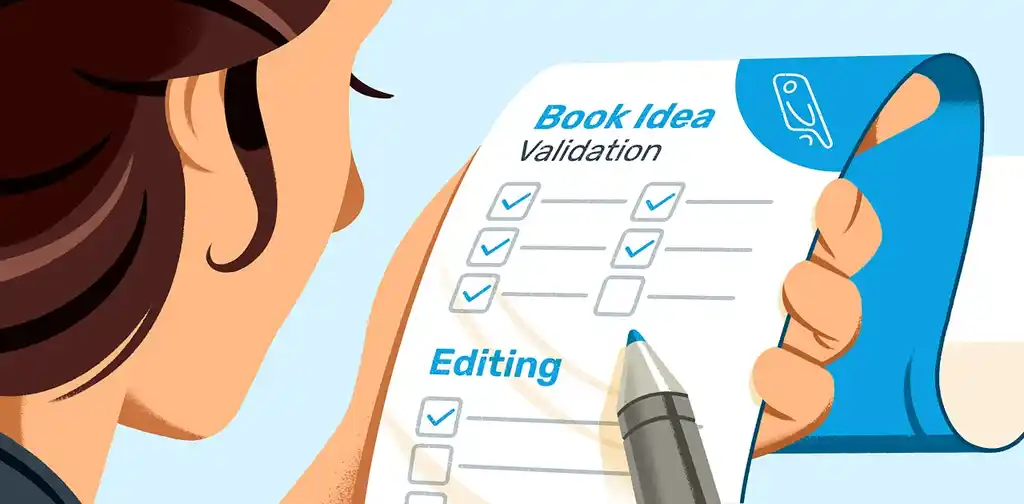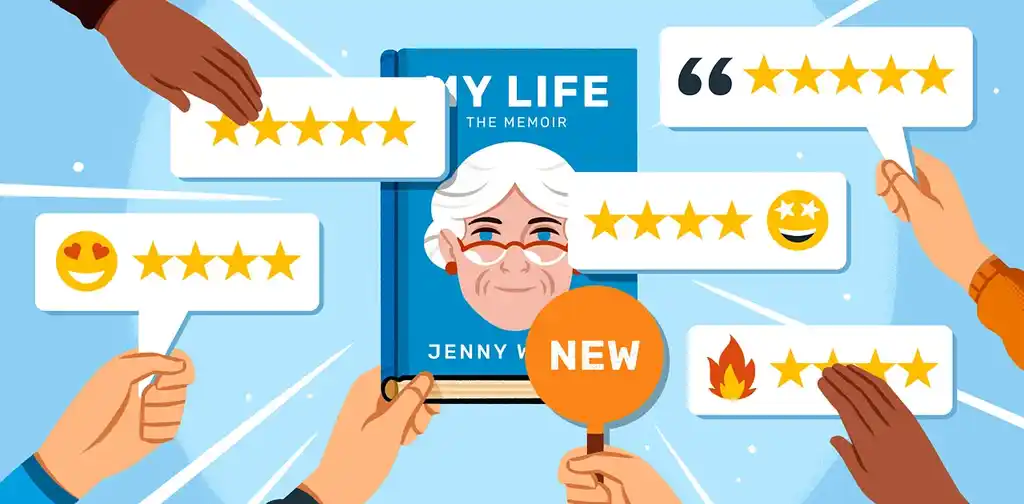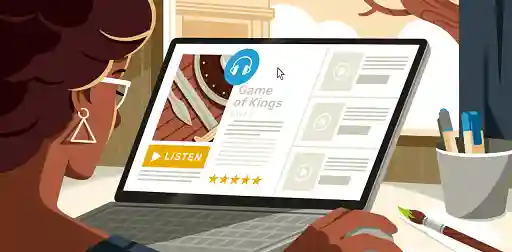Last updated on Oct 15, 2025
4 Tips to Market Children's Books, According to a Bestselling Author
Martin Cavannagh
Head of Content at Reedsy, Martin has spent over eight years helping writers turn their ambitions into reality. As a voice in the indie publishing space, he has written for a number of outlets and spoken at conferences, including the 2024 Writers Summit at the London Book Fair.
View profile →The basic idea of marketing a book pretty straightforward: find out who likes your book, discover where they ‘live,’ then make your work available there and make them buy it. And when you’re selling books for kids, the principle is the same — with one exception.
In the children’s book market, the target audience isn’t made up of children but the bigs who purchase the books for them. That might be parents, uncles, aunts, grandparents, teachers — whomever. Once you’re able to tap into what they want in a kid’s book, you’ll quickly realize that you couldn’t ask for a better target consumer:
- They have simple core desires: to get a book the child will love,
- Kids go through a LOT of titles, so they always need new books,
- Once they find an author they like, they will read EVERYTHING they’ve written, and
- It’s easy to find out where parents, teachers, and such ‘live’ online.
In this article, bestselling children’s book author Yvonne Jones shares advice for marketing children's books that comes from her own personal experience. With that in mind, we’re going to look at four key ways that you as a children’s author can effectively target the people who buy children’s books. But first, let's answer the burning question: is your eventual ROI worth all of the marketing?

FREE RESOURCE
Reedsy’s Book Marketing Checklist
Tick all the boxes, from ads to networking to social media and beyond.
How much can you make writing children's books?
The simple answer is that it varies. If you choose to go the traditional route, publishers generally pay you an advance that may fall anywhere between $5,000 to $30,000, depending on your genre. Hannah Holt shares her finances (around $17,000 a year) writing children's books in this post on her blog. (Side note: if you're interested in this route, check out our directory of top children's book agents to query!)
Self-publishing a children's book, which fetches you a much larger percentage of the royalties, can also be a profitable project, as we explain in our guide here. Holt conducted a survey of children's book authors that shows that 62% of indie authors earned some money self-publishing. (Though this, too, will rely on a number of factors, including the specific niche, the quality of the book, and the author's marketing savvy).
That said, most children's book authors reveal that the biggest reward stems from the intangible: the simple joy that comes from writing books for children. In an article for Huffington Post, children's book author Kate Klise shares:
I received a letter last week from a reader in Oak Park, Illinois, who said my 43 Old Cemetery Road series had been “like a friend since second grade.” The letter writer, now in sixth grade, went on to say: “Even now as I read slightly more advanced books (Moby Dick and Little Women), if I can’t sleep at night or can’t seem to calm down before bed, it’s one of your books that comes down and saves the day.” I’m getting misty-eyed. You will, too, when you receive mail like this. But these priceless letters make me feel like what I do matters. And isn’t that what we all want from our work?
I finally did write an adult book called In the Bag. It sold well in Italy and Indonesia, but I rarely hear from anyone in this country who’s read it. Meanwhile, I get letters every week from young readers who have read my books, sometimes multiple times. My new friend in Oak Park said she’d memorized one of my books. (It’s 136 pages.)
With this ROI in mind, let's take an in-depth look at how to market your children's books.
How to market children's books
Many self-publishing children's book authors have made it big, simply by playing by the right marketing rules. Now, children's book author Yvonne Jones recommends four key ways to market your children's books.
1. Hit up social media
Blogs, Instagram, Facebook Groups, Twitter, Reddit. These days, parents of young kids are almost always millennials — and, as a result, will rely on the internet for almost any kind of recommendation.
Search through Facebook for children’s book groups, or groups that might be concerned with the topic of your book. If you’ve written a picture book about firetrucks, you can bet there’s a Facebook group of people who love fire trucks — and some of those people are going to have kids.
Share pictures of your book on Instagram or Twitter using relevant hashtags — ones that either deal with your book’s topic (#unicorns #firetrucks) or tap directly into your audience (#mommylifestyle #picturebooksaremyjam).
And have you claimed your books on Goodreads? If not, then do so RIGHT NOW. It’s the largest social network dedicated to sharing books: if you're really serious about marketing children's books, you ignore it at your own peril.

FREE COURSE
Book Marketing 101
Learn seven tried-and-true strategies for boosting book sales.
2. Get your book into libraries

Libraries are a huge opportunity. Most parents won’t buy every book for their child, and a lot of them will rely on borrowing titles from their local library. If you manage to place your book into the children’s section of a branch — then you’re almost guaranteed to get borrows. And if those parents (and their kids) like your book, then they’ll want to read anything else you’ve written. And they just might be up for paying money for it this time.
However, to get your book into a library system, you need to convince librarians of its value and make it easy for them to order it in. To do that, you should:
- Ensure that your book has a healthy stream of positive reviews,
- Make it easily available through major wholesalers (like Ingram or Baker & Taylor), and
- Introduce yourself.
That last point might seem daunting, but plenty of libraries love hosting story hours with authors, according to Jones.
“Most libraries have weekly scheduled story times already, with lots of children and parents attending. Call nearby libraries and let them know about your book. Be sure to bring a number of paper copies on the day of the reading, so you can sell your signed book.”
Free course: How to market a children's book
Get your book into the hands of little readers everywhere. Sign up for this online course and get started now.
And meeting your readers isn’t just limited to libraries...
3. Plan school visits
“Many children’s book authors don’t realize that many schools set aside an annual budget for paid author visits,” Jones says. And indeed, there’s a chance you could be eventually paid for your school appearances — a nice plus when you're marketing children's books.
The trick here is to be organized. Make sure you have a plan in place before you contact any schools. Tell them what age range the book is for, send over links, a cover image, a synopsis and anything else they might want to know about your book.
Then as soon as the school agrees, send over a summary of your planned visit. At this point, Jones would also be sure to secure sales with their parents, if appropriate. (Remember who your target audience really is.)
Jones finishes up her advice with this: “Follow up the email with a phone call to let them know that you visit local schools for free, in return for the school sending slips home, offering the chance to buy signed copies of the book.”
And there are plenty of other tricks you can try to reach the children’s gatekeepers. You can try creating a trailer, you can guest post for parenting blogs. So long as you stay focused and direct your efforts to find where the buyers of children’s book live — you won’t go far astray.
Q: What marketing strategies are most effective for promoting a self-published children's book to the right audience?
Suggested answer
Know exactly who you are marketing to, and your book will sell so much easier than if you try to market to "every parent." Instead of targeting parents of children aged 5-8, be specific and craft your copy and ads to appeal to a niche of parents, such as "Parents of girls ages 5-8 who love to play in the mud and sing silly songs about frogs." The more specific you can be, the better.
Lisa is available to hire on Reedsy ⏺
Making sure you build in enough time into your publishing timeline for an ideal marketing launch is important. This would be at least two to four months in advance of the book's publication date. Creating buzz before the book lands in stores (or online), such as submitting for advance trade reviews from review journals, will help optimize your book for great sales numbers that first week. And hopefully, those initial sales will then prompt consumer reviews early on.
Another important--and easy--marketing tactic for self-published authors is to never underestimate the power of local marketing. An author's community is generally looking to champion someone who has done well or achieved something exciting within their own backyard. A local story or coverage about an indie author's book can go a long way to generating a larger story outside of their community. And sometimes that can even organically lead to amazing coverage in a major newspaper or television segment.
For children's books, it can be challenging for a self-published author to get into schools and libraries unless you are distributed through a wholesaler. Pounding the pavement has its rewards, going to local schools and libraries, offering a storytime or autographing, leaving behind sell sheets for your book. Educators and librarians are huge influencers and their word of mouth is gold for many families and caregivers of young children.
Tara is available to hire on Reedsy ⏺
4. Get your Amazon page right
In 2021, Amazon is still the biggest retailer for self-publishers. And since we're in the age of the Internet — where your Amazon product page is the equivalent of your storefront — you'll want to make sure that it's as optimized for potential readers as possible.
With this in mind, consider re-examining:
- Your author page (which you can edit using Amazon Author Central. This is your public profile for interested readers. Don't overlook this as an opportunity to brand yourself! Make sure that you've perfected your professional biography — and don't forget to include a link to your author website. If you don't have one yet, set one up ASAP.
- Your book description. This key element of your product page should be designed to convert people from browsers to buyers. Above all, ensure that your headline is gripping and that your blurb is snappy. You can head to this post to learn more about how to write a book description that sells.
- Your Amazon keywords. Amazon uses its own algorithms to recommend books to readers. Mastering this is one of the best ways to boost the discoverability of your books on Amazon, so that readers can find your books in the first place. We recommend taking this free 10-day course that teaches you all of the secrets behind Amazon algorithms if you'd like to learn more.
Have you tried any of these tips before? What's been your experience like marketing your children's book? Leave your thoughts in the comments below and we'll get back to you right away.







